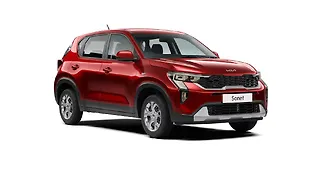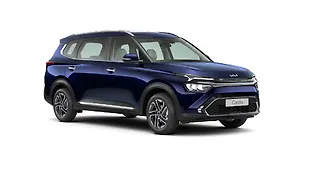Highway Report, Pros and Cons
Introduction
I had two options. Take four flights over the course of as many days, or take two extra days, skip the flights altogether, and take a road-trip instead.
I chose the latter. And since my new long-termer - the Kia Carens - was seemingly giving me longing looks; looks that begged me to save it from the rut of tedious home-to-work and back daily commutes, I decided on the Carens to be my set of wheels for the said road trip. A route was planned. We’d first go catch some sun, sand, and winding roads en route to Goa. Spend a couple of days driving some new cars in Goa. Then take the coastal road down south to Coimbatore to ride a race motorcycle. This would help the Carens and I experience the good, the bad, and the ugly, our state and national highways in Maharashtra, Goa, Karnataka, Kerala, and Tamil Nadu have to offer. And, of course, give me a better understanding of Carens as a car to travel in. After a day in Coimbatore riding at the Kari Motor Speedway, we’d head back up north, back to Mumbai via the well-paved, well-used, and well-known National Highway 48. That’s exactly what we did. And after six days of road tripping, here are the pros and cons we discovered about the Kia Carens as a highway car.
Good things

Ride comfort: You literally don’t have to slow down for anything on the Carens. And not only does it help keep your travel time low and your fuel-efficiency high, but it also takes away the fatigue to a degree. Yes, the ride is a little noisy, but it absorbs everything wonderfully well!
Visibility: The view upfront is wide, without any obstruction. The rear-view mirrors are big and usable. And even with the rear blinds pulled up, it isn’t difficult to see what’s coming from behind when joining a main lane or road. The A-pillar blind spot did catch us unaware a couple of times, but it’s not too bad. And good visibility meant better safety, lesser stress, and a more comfortable drive overall.
Front Seats: On this top-spec Luxury Plus trim, the front seats get ventilation, height adjustability, and enough thigh and back support to keep you going for hours without wanting to stretch or move around in the seat. You don’t end up with a sweaty and sticky back; your legs don’t cramp up, and there’s hardly any stiffness in the back to complain about. The steering position sits well too, improving both leverage and comfort.

Brakes: I like how the brakes are calibrated. The bite, the power, and the progression are well-judged. So you don’t end up surprising yourself by being jerky on the brakes. Even when coming down a ghat quickly, I didn’t feel like the brakes were struggling. And this is an automatic which relies more heavily on brakes than a manual. Plus, the brakes are easy to modulate, lean on, and trust, courtesy good feel.

Carrying capacity: A motorcycle kit-bag packed with a one-piece riding leather suit, tall riding boots, gloves, a back-protector, and riding inners. A helmet. And a medium-sized duffel bag bordering on large with a week’s worth of clothes, and enough chocolates to feed a village. Not to mention, coffee, a French press, and a shinier set of borough boots to wear to a couple of dinner gatherings. All this packed into the boot without folding the last row! And I didn’t even have to reach for the under-floor boot storage. The loading lip isn’t high either. So, putting things in or pulling them out wasn’t a struggle.
Torque: Cruising at 100kmph? The 1.4-litre petrol and DCT combo do it effortlessly while sitting under 2,000rpm. Quick overtakes on dual carriageways don’t even need you to hit 3,000rpm! Climbing up a ghat road? Again, never did I see the number cross 3,500rpm. It’s only when I wanted to make really fast, slightly scary overtakes from a near standstill on a busy single lane state highway, did I mash my right foot to the floor. This did mean hearing engine notes that weren’t exactly pleasing. And, taking a hit on the fuel efficiency. But for the other 90 per cent of the time, driving the Carens, riding its torque curve, and being gentle on the throttle proved more than enough for our highways.

Fuel Efficiency: The Carens returned close to 16kmpl consistently on dual carriageways, which for a petrol automatic is good. This dropped to a little under 12kmpl all through Kerala where we were averaging at around 35kmph on the narrow and busy National Highway 66.
Not so good things

Steering Response: It’s a quick enough steering. This means, you never find yourself wanting if you need to take evasive action. It’s acceptable around a set of corners too. But, it’s the speed and force of the steering’s returnability that feels both artificial and tedious. Tedious because you have to fight it.
In-built maps: Yes, I have Google maps. And yes, there isn’t a better alternative. But, the Carens has in-built maps, and I couldn’t control my urge to use it. Now, for the most part, the maps are accurate. The traffic prediction is acceptable. And feeding destinations isn’t a task. But, when it misses the crucial turn-offs and newly constructed roads which are both quicker, nicer, and less busy, it does get your goat. Eventually, I had both Google and the in-built maps running simultaneously.

What’s next?
Next month, we will give you our perspective on two things.
One. The Carens has proved to be a lovely long-distance car from the practical, usable, and driving points of view. But, will this still hold true from the point of view of passengers who are subjected to a 1000km road trip?
And two, we will gauge how the Carens fares as a daily commute companion. We will tell you what works and what doesn’t when the Kia is subjected to Mumbai’s peak-hour traffic, repeatedly, two times a day; ease of driving and parking, fuel efficiency, comfort, et al.
Product Details
Make: Kia
Model: Carens
Version: 1.4 Turbo Petrol / DCT automatic / Luxury Plus
Kilometres this month: 3800km Fuel Efficiency: 15.1kmpl
Price: Rs 20.15 lakh (when tested)
Photography: Kaustubh Gandhi and Kapil Angane

![Kia Carens [2022-2023] Image Kia Carens [2022-2023] Image](https://imgd.aeplcdn.com/272x153/n/cw/ec/107539/exterior-right-front-three-quarter.jpeg?isig=0&q=80)

























